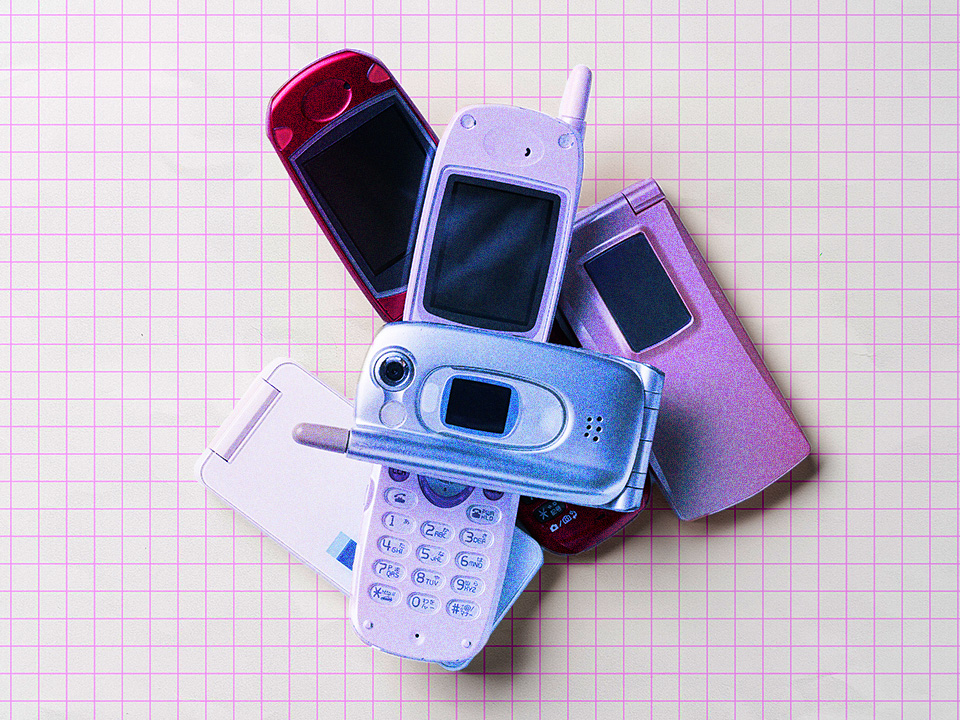4 Communication Styles That Will Sum Up All of Your Conversations
Plus, what your go-to style says about you.
If you’ve spent much time around your fellow humans, then you already know we all have very different ways of communicating. Maybe your partner yells when they get upset, while you prefer to wield the silent treatment. You may have even noticed that our communication styles can pivot from one interaction to the next. Maybe you’re usually direct to a fault, except when you’re talking to your parents.
Lucky for us, there are experts who can help us make sense of all this. Communication pros have identified four primary communication styles that help explain pretty much all of your interactions with other people. Understanding these four styles and what they mean might help you see your conversations in a completely new light.
Here’s what experts want you to know about the four main communication styles: what they are, what they sound like, when and why we use them, where your go-to style comes from, and whether you can learn to change it.
What are the four main communication styles?
The styles are based on “the four different basic ways that people communicate with each other,” says Debra Roberts, LCSW, a communication expert specializing in conflict resolution, relationships, and workplace dynamics. It’s not entirely clear where the framework comes from, says Madeleine Holland, PhD, associate professor of communication at The University of Texas at Austin Moody College of Communication. And while it hasn’t been studied much by communication scholars, “that doesn’t mean it’s not useful,” Dr. Holland says. The model is simple, makes intuitive sense to most people, and, most importantly, can be pretty illuminating.
“Having a framework or words to put around abstract interactions is very helpful for people in understanding and sense-making about that interaction,” Dr. Holland says. It’s kind of like putting on a pair of glasses that help you see not just what the other person is saying but how they’re saying it. So you can look at a tense conversation you just had with a roommate and be able to say, “Hm, that felt passive-aggressive,” Dr. Holland explains. Not to mention, understanding the four styles unlocks self-awareness—the first step in being better at communicating, Roberts says.
Most people dabble in all four communication styles at some point, but you’ll probably notice that one feels the most familiar to you and your connections. “You tend to spend most of your time communicating in one of these categories more than the others,” says Roberts. But you’re not locked into one. “We can move between them,” Roberts explains.
OK, so let’s get into the four styles.
1. Passive
Passive communication is like “taking the backseat in a conversation,” Roberts says. It can sound like being submissive, quiet, appeasing, indirect, fawning, and not stating our feelings and needs. We might constantly defer to the other person (“I’m totally good with whatever you want to do!”) or minimize our feelings (“It’s not a big deal, don’t worry about it.”), or apologize a lot.
When we’re using passive communication, we might be silently “waiting and hoping for others to read our minds,” says Ali Miller, LMFT, a marriage and family therapist and couples communication coach. For example, if your partner left their dirty dishes in the sink (again), a person who favors a passive communication style might privately be upset and wish their partner would change their behavior, but not say anything at all.
Some people who favor passive communication may be just more easygoing by nature, Roberts says, and they’ll switch to a different style when they need to. But leaning heavily on this style can also indicate that we believe our needs and feelings don’t matter, Miller says. Or that avoiding potential conflict is more important. It’s also common to use a passive communication style in dynamics where you think you have less power, Miller says—like, say, when communicating with your boss.
2. Aggressive
The other end of the spectrum is aggressive communication. This can range anywhere from dismissive to overly defensive or even bossy, says Miller. Or it can sound like being loud, demanding, hostile, or downright mean, Roberts says. You might make critical or judgemental comments (“What’s wrong with you?” or “That’s stupid”), raise your voice, or place blame, Miller adds.
If a person with an aggressive style noticed their partner left their dirty dishes in the sink, they might say something like, “You're so lazy and inconsiderate. Put the dishes in the dishwasher!” Miller says.
Some people simply have more of an aggressive communication style, Miller says. “They might think they're just expressing themselves. I’m passionate, I’m intense,” Roberts says. But aggressive communication can also stem from an underlying belief that only my needs and feelings matter, Miller says. Or, again, they lack the tools to communicate their needs properly—so they resort to force.
You’re more likely to use an aggressive communication style when you feel like you have the upper hand. But you can also resort to aggression when you’re in distress and have important needs (like safety or being understood) that aren’t getting met for a long time, Miller says. “A lot of us tend to get louder when we're not being heard.” So someone who defaults to passive communication—and has a lot of unexpressed needs bottled up—can actually end up exploding into aggressive communication.
3. Passive-aggressive
As the name suggests, this style is a mix of the previous two. As with passive communication, this one is characterized by avoiding directly stating your feelings or needs. But there’s a tinge (or more than a tinge) of aggression thrown in, Roberts says. It can sound like terseness, sarcasm, subtle jabs, snarkiness, saying perfectly kind words but in a bitter tone, or giving someone the silent treatment. You might roll your eyes, give a snippy, “Mhm,” or say, “Yup, that’s totally fine” in a tone that says it’s totally not.
In our dirty dishes scenario, a passive-aggressive communicator might roll their eyes and make a sarcastic jab, Miller says, like, “Guess I’ll do the dishes…again.” Or they might not bring it up with their partner—but then, at a party that night, complain about how messy they are to a friend while the partner is in earshot.
Unsurprisingly, these mixed signals can “often lead to the other person feeling confused,” Miller says. “Like, Wait, are you mad at me?” Or you might sense some tension, but not be able to put your finger on why.
A passive-aggressive style often stems from “confusion about when your own needs even matter” or “feeling like you can’t express them directly,” Miller says. (Maybe because you’re afraid, or you just don’t know how.) You’re also more likely to use this style when you feel you have less power than the other party, Miller says. For instance, maybe someone who’s normally more aggressive leans more passive-aggressive in disagreements with their boss.
4. Assertive
Assertive communication is when we’re being direct, respectful, clear, calm, collaborative, and curious, Roberts says. We don’t resort to avoidance, intimidation, or mixed signals because we can express ourselves effectively. Assertive communication sounds like directly stating our needs and feelings—while also making space and expressing consideration for the other person’s needs and feelings, Miller says.
You might say something like this, Miller says: “This is what I see happening. This is what I feel in relation to that. This is what I want or need. Would you be willing to do this?” And despite this being a healthy way of expressing your needs, when someone isn’t as familiar with assertive communication, they might actually mistake the person for being aggressive or “too direct,” Roberts says.
An assertive person who saw their partner’s sinkful of dishes might say something like, “The dishes piling up in the sink makes me feel overwhelmed, and I’d love some support in keeping the home tidy so I can feel more relaxed and not resentful. Could you please put your dishes in the dishwasher at the end of the night, or can we switch off who does the dishes each day?”
Miller says the belief at the core of assertive communication is that your needs and feelings truly matter—and so do other people’s. You believe that your desire for a clean sink matters, and you assume that your partner is also getting a need met by leaving their dishes out (like being able to just collapse on the couch after a long day).
So we’re more inclined to be assertive when we trust that the other party values our needs and will meet them, Miller says. It’s also easier to access when we feel like we’re on equal footing with someone, Roberts says—a healthy friendship, a mutually respectful colleagueship—as well as when we’re feeling emotionally regulated.
A few caveats about communication styles
These four communication styles aren’t always so cut and dry. Here are a few nuances experts want you to keep in mind about where the styles come from, why we jump around, and how we can learn a new style.
A lot of factors influence your go-to style.
So, why might we gravitate towards a particular style? You can blame that on conditioning, Miller says. How you grew up has a massive impact. “We model what we learn in our families,” Roberts says. If your parents or older siblings favored one style, that’s more likely to become your default (and seem pretty normal to you). Or maybe you grew up in a household where you learned your needs don’t matter, Miller says, so you learned to resort to passive communication.
How we’re socialized also matters—like the communication norms of the country and culture you’re raised in. “There are certain cultures that are generally more passive and others that are more direct and assertive,” Roberts says. Gender dynamics factor in too. Girls, women, and feminine-presenting folks “have been historically socialized to be more passive,” Roberts says. Meanwhile, assertive communication can be especially tough for women, who “often struggle with expressing our needs directly [and] making clear, direct requests,” Miller says. Race can also play a role, especially if racism and racial biases have impacted the way you feel comfortable communicating. “Perceptions, biases, and expectations can influence whether [you’re] seen as confident or aggressive,” Roberts says. For instance, a woman or BIPOC person may be more likely to be accused of being aggressive when they’re being assertive.
You switch between the styles based on several factors.
It’s normal to shift gears depending on the person and scenario. If the other person has a volatile temper or is dominant in the relationship, for example, you’re more likely to tip-toe around them with passive communication. Then there’s the social norms of the environment you’re in, Roberts says—school, the office, the doctor’s office, church. Maybe you’re typically more passive-aggressive, but switch to passive when you’re talking to your teacher or manager because that’s more how you’re expected to behave.
Your emotional state matters too. “If you're under stress, if you're fearful or angry, it can shift how you communicate,” Roberts explains. Maybe you’re pretty good at assertive communication when you’re feeling calm and curious—but flip into aggressive mode when you’re upset. The style you tend to lean on when you’re in distress often corresponds with your typical stress response (or “fight-or-flight” response). For example, “If your default is to go into fight mode, you're probably more likely to have aggressive communication,” Miller says. “If your default is to go into freeze mode, you're likely to be more passive.”
Most of us need to practice assertive communication.
The most effective communication style is assertive. But it doesn’t come naturally, and it’s not often modeled for us. “I don't know anyone who is a master of assertive communication without actually working on it,” Miller says. Otherwise, we’re probably going to default to one of the others. “When we don't know how to be assertive, or we can't tap into our sense of empowerment or mattering, that's when we tend to be passive, aggressive, or passive-aggressive,” Miller explains.
Luckily, assertive communication is a skill you can get better at with practice. Miller says a good place to start is the Nonviolent Communication model, which is a simple four-step framework. You could also work with a therapist or coach specializing in interpersonal communication.
None of the communication styles are bad.
Sure, a lot of us might be aspiring to get better at assertive communication. But “none of these styles are bad or wrong,” Miller points out. “They're all attempts to meet needs.” For example, being passive may fulfill the need for a sense of safety in a tense or dangerous situation. Being aggressive can be an attempt to be heard or appear strong. So don’t judge yourself. “We're always doing our best,” Miller says. “Have self-compassion.”
Wondermind does not provide medical advice, diagnosis, or treatment. Any information published on this website or by this brand is not intended as a replacement for medical advice. Always consult a qualified health or mental health professional with any questions or concerns about your mental health.




